In today’s competitive corporate world, designing an efficient workspace has become mandatory for every growing company. Optimizing cost and bringing employees together under one roof are no longer the only concerns of CEOs when they ask designers to create their corporate workspaces.
Fortunately, office design has evolved drastically over the years. Companies want their working environment to be a place that stimulates exchange, creativity, and innovation. With this in mind, the design should not only determine the aesthetic and vibe of a workspace but also represent the company’s values and identity. Many factors come into play when establishing the character of a space, from the general layout to the lighting and colours; designers need to make the right decisions to create a pleasant and friendly work environment that promotes well-being in a company. Let’s talk about some of the most important elements when it comes to designing an effective workspace.
1. Layout for efficiency:
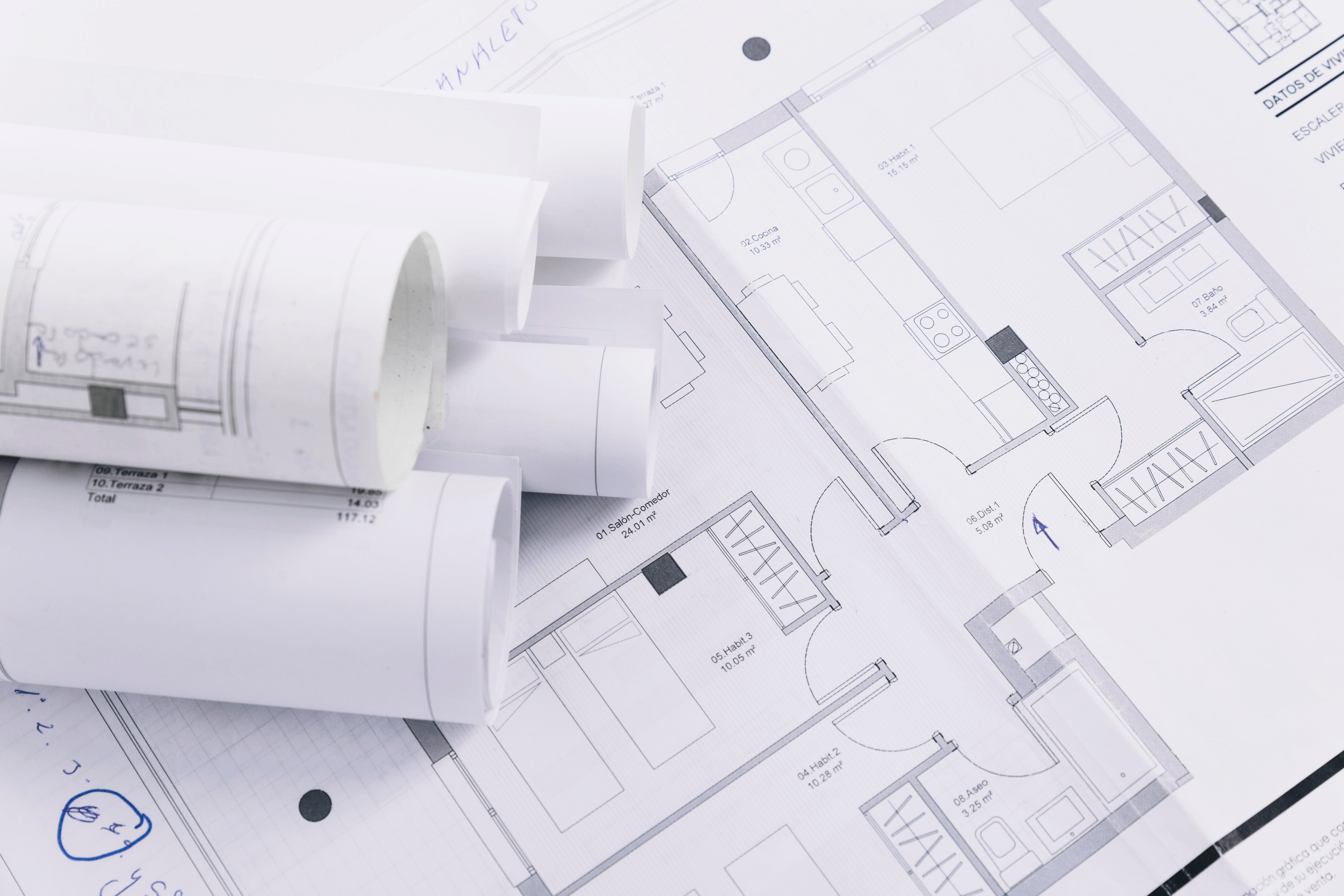
Layout planning is undoubtedly the first element that designers take into consideration when creating a workspace. The layout distinguishes the personal and shared spaces while simultaneously affecting the employee’s perception and behaviour in each one of these areas. The conception of a plan will vary from one workspace to the other depending on each firm’s character and required work conditions. However, there are a few guidelines that must be adhered to for effective planning. Flow and ease of movement, for example, encourage interactions between facilities and can lead to increased efficiency. Open spaces allow employees to effectively complete group tasks, while quieter areas enhance focus and concentration.
2. Lights for productivity:
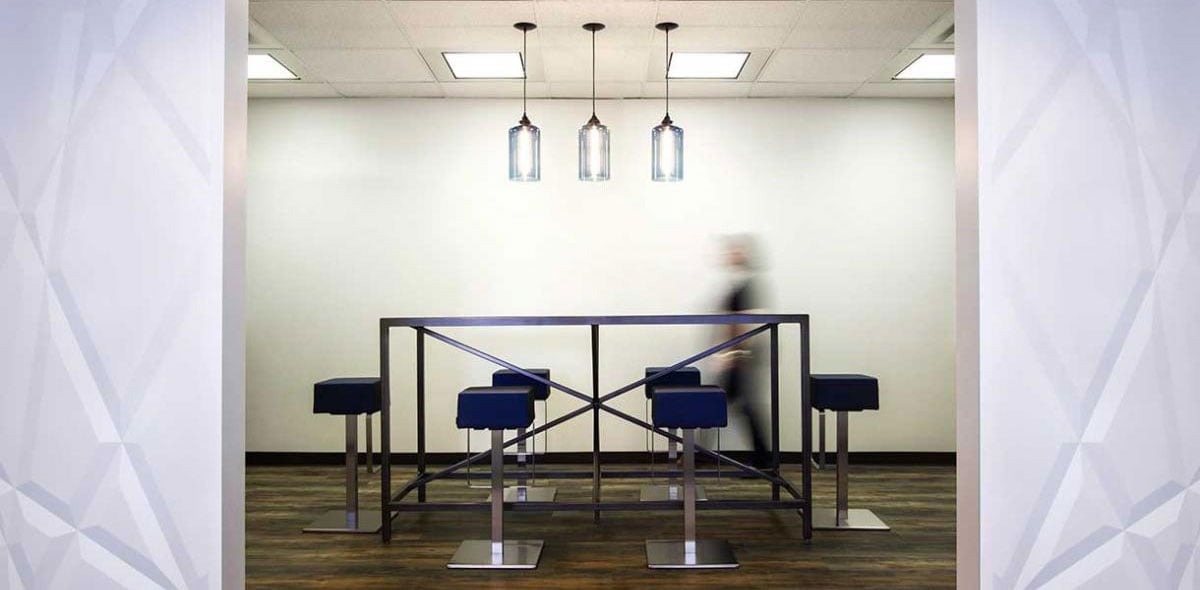
Choosing the right lighting can make a big difference in a workspace environment, as proper lighting has a significant impact on an employees’ well-being. It increases their ability to concentrate, prevents fatigue, and helps them get better sleep at night. In addition, researchers have found that good corporate workspace lighting increases motivation, efficiency, and performance, directly influencing the company’s financial results. Companies also have an important role to play in the protection of the environment. Energy consumption can be significantly reduced with specific designs. Not only is this good for the environment, but it also benefits the company financially. The use of low-energy light sources can help save at least 50% of electricity costs.
3. Colors for identity:
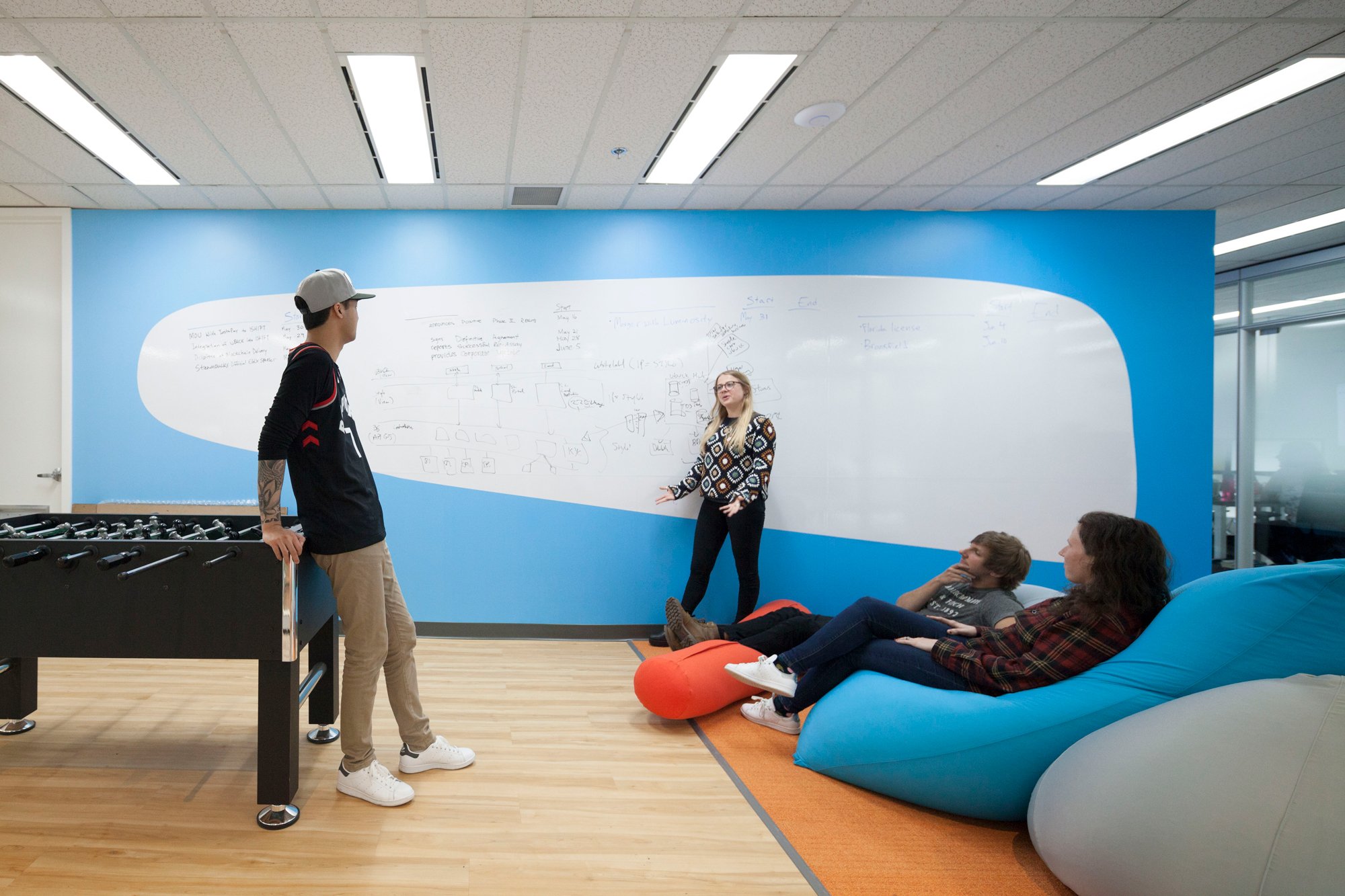
Carefully chosen colors are often the perfect complement to proper lighting. Studies have found that colors can unconsciously influence our well-being and state of mind at work, triggering specific functions of our brains. Larger firms, such as Google, arrange their offices using different colored spaces that change according to the nature of the tasks being performed. Warm colors, for instance, are used in meeting and gathering spaces, while green and blue are applied in areas meant for concentration and focus, promoting calmness. What’s more, colors can be used to create a sense of aesthetic unity in the workspace. This can be achieved by matching components such as walls with different pieces of furniture or decoration. Colors can also define a brand’s identity and subsequently, the essence of a company can be captured in its workspace design.
4. Furnishing for comfort:
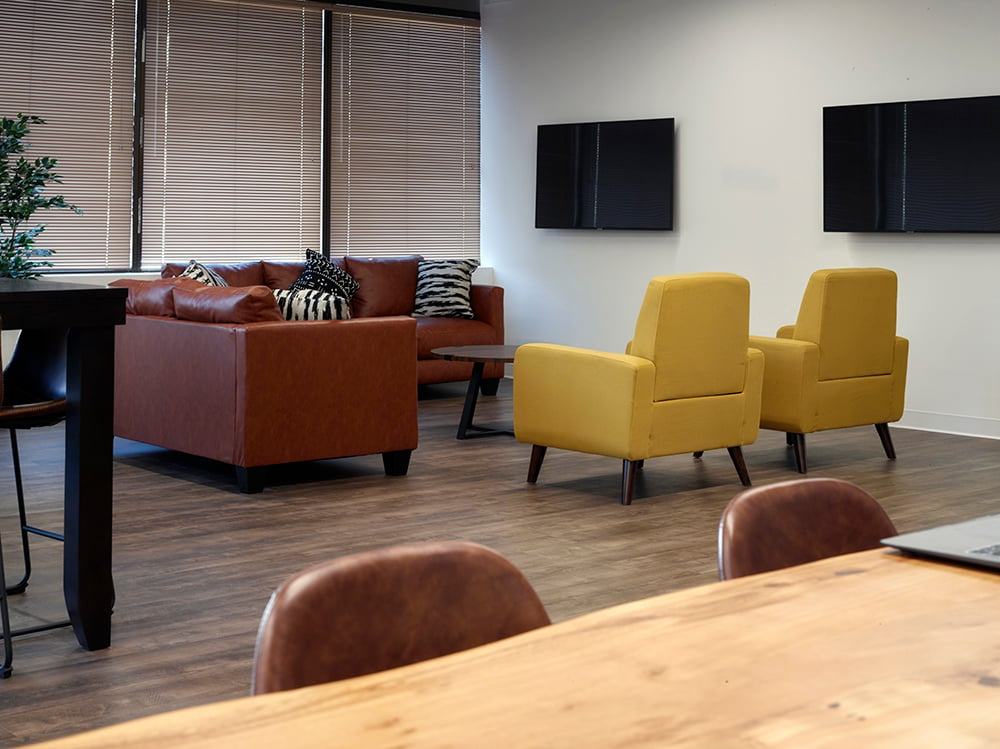
Furniture choice is another important element of corporate space design and requires a lot of attention. The designer must examine the specifications of each professional environment and only use items that reflect the brand’s identity, matching the overall design. Furniture choice must enable employees to work in the highest quality conditions: choosing well-designed workstations is important, seats should be comfortable and easily adjustable… and that’s just the beginning. Using the right furnishing will increase productivity and prevent accidents in the workplace. For open spaces, noise-absorbing materials and quieter mechanisms are recommended. The purchase of furniture must be a long-term investment and as a result, these should be advised on by a professional.
5. Plants for attendance:
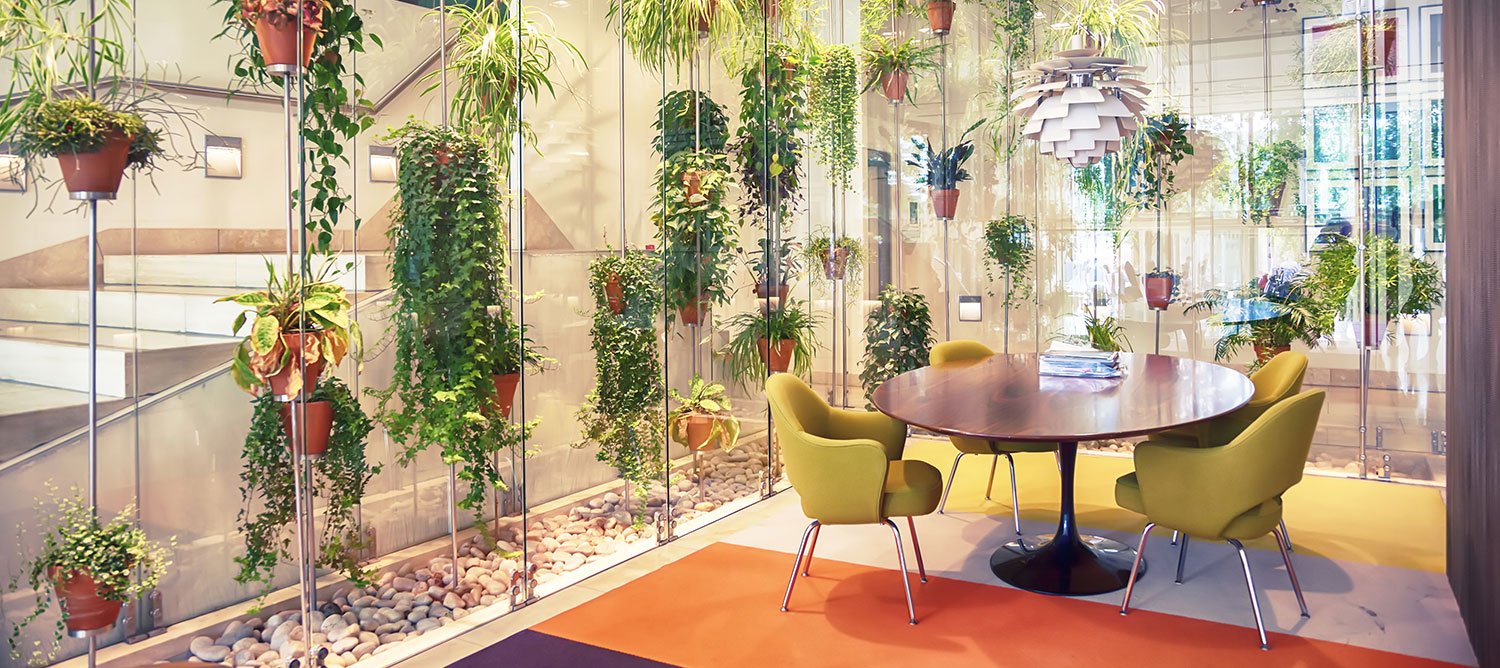
An increasing number of companies have realized the benefit of incorporating plants into their workspaces. Someplace succulents around their offices; others go a step further and use green walls to define different areas. Although this example from the Google office may seem a little extreme, placing some plants in your company’s workspace wouldn’t be such a bad idea. A green workspace is not only more stylish, but it also brings added benefits to the mental health of employees! Plants act as a natural air filter and enable employees to become more efficient. A Cardiff University study demonstrates that plants incorporate workspaces increase productivity by 15% and decrease absenteeism by 10%. Who would have thought it?
Overall, the decision to design or redesign your company’s workspace shows that you’re ready to scale your business. Great design will certainly help do that and reinforce your brand identity through the aesthetic aspect of your company’s offices.
We talked about the five most important rules for designing a great corporate workspace; however, let’s not forget the most important one: pick the right designer! At Truspace, we know that every corporation has a story! Our team will make sure to portray that story in the best light through the design of your workspace! As a result, you can rest assured that we’ve taken your company’s unique needs into consideration as we craft a space that will fundamentally influence your organization and its success.

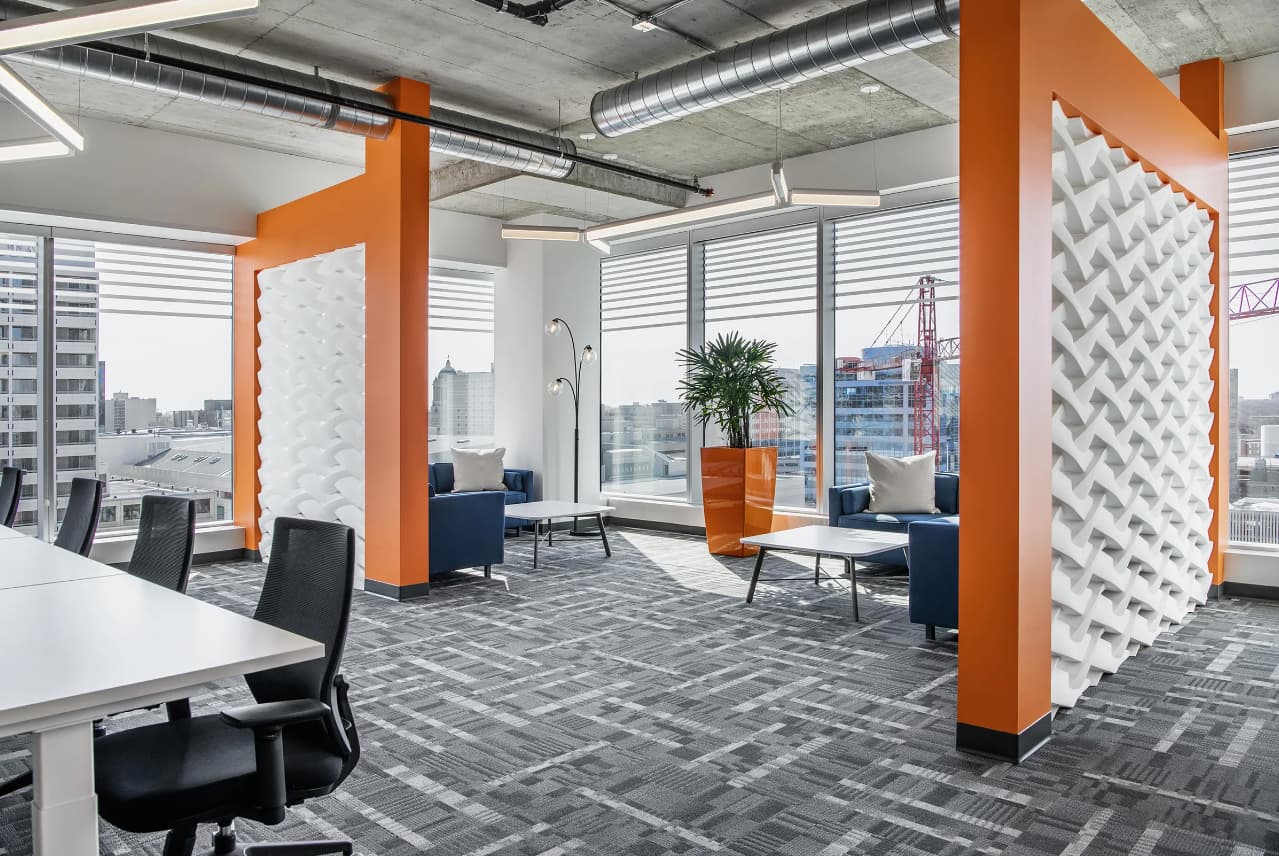
.jpg)
.jpg)
.jpg)